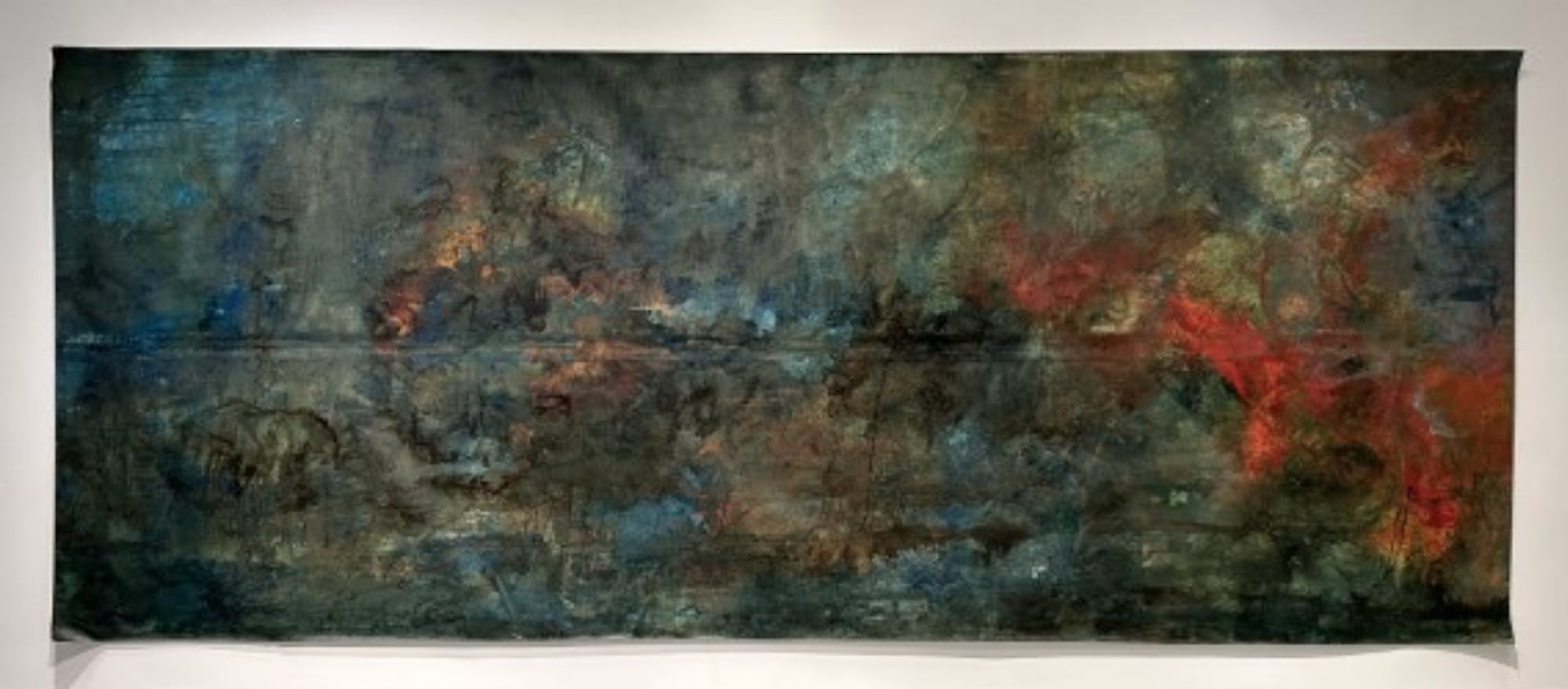The studio art department named Alaskan native Athena LaTocha the artist-in-residence for the spring term. According to studio art department exhibition director Jerry Auten, this year marks the 92nd anniversary of the program, which aims to connect the Dartmouth community with artists of all backgrounds, experiences, ages, interests and work styles..
LaTocha will be in residence until the end of the spring term, according to the studio art department’s website. She has already completed a work that draws from the natural elements of New Hampshire — titled “The Night the Earth Caught Fire,” her piece incorporates shellac ink, synthetic walnut ink and charcoal from New Hampshire trees.
Since 1962, the studio art department has invited three to four artists a year to complete ten-week residencies on campus. Artists display their work in the Jaffe-Friede Gallery in the Black Family Visual Arts Center and interact with faculty and students on campus, while also expanding their portfolios.
Originally a painter, LaTocha gave a presentation about her work on April 2 in Loew Auditorium. In the presentation, she said her artwork has evolved and developed since she began to consider the role of objects and movement in space and take inspiration from the ways the natural world forms and shapes material.
“Why are we taught painting from a Western perspective?” LaTocha asked. “We start with French cave paintings, but what about the others?”
LaTocha’s presentation focused on her recent works and the research needed to effectively represent natural landscapes in her art. She also talked about her process for creating large pieces of art — noting that many of her works are larger than 100 square feet — and described the process of working with lead and other natural elements.
LaTocha also discussed the evolution and progression of her art over time. She said that when she first became an artist, she worked with rocks, tire tread, moss and mud. To create her massive works of art, LaTocha said she now works on the floor, section by section, carefully stitching together a larger image.
“I work intuitively,” LaTocha said. “I feel like all I do is in desperation.”
For her work “Ozark (Shelter in Place),” LaTocha said she traveled to Pea Ridge National Military Park, a Civil War battlefield in Arkansas, to research the landscape and get a better sense of the area’s geologic features.
“Ozark” is a 120 x 288 x 12’ work that incorporates a mixture of sumi and shellac ink and earth from Pea Ridge, according to LaTocha. In order to represent the rock formations of the area, LaTocha molded sheets of lead over the geologic formations. She said these lead representations add a third dimension to her work, providing depth and topography.
“When you clad something in material, you transform it,” she said.
For her recent 2021 piece, “It Came From the North,” LaTocha said she turned to New York City for inspiration. Having previously utilized materials that came from deserts, swamps and forests, LaTocha said she looked toward construction sites — or the “underbelly of the city” — for this piece.
Everything in a city is covered up or imported, according to LaTocha. “It Came From the North” represents the ways in which humans, like rivers and glaciers, change the landscape. In turn, LaTocha said she incorporated earth from the Green-Wood Cemetery, demolition debris, glass microbeads, lead and ink into the piece.
Lily Thornton ’26, who attended LaTocha’s presentation, said she connected with the work due to being a studio art major.
“To me, art is a way of showing people what’s in your head and transcribing that into paper so other people can see it,” Thornton said.
Thornton added that LaTocha’s work brings geologic and natural formations into a realm that viewers may not notice at first glance — which makes the pieces feel more realistic.
“I’m never going to see those [natural carvings],” Thornton said. “But seeing the lead, I can imagine what that looks like.”
Studio art department exhibition director Jerry Auten — who is in charge of directing the artist-in-residence program — said that the program allows students to conveniently discover art.
“One of the benefits of the program is that it brings world class artists to campus so students are exposed to [world class art],” Auten said. “Past artists-in-residence have been artists of different mediums and from different parts of the world. They have been performance artists, sculptors, weavers and architects.”




